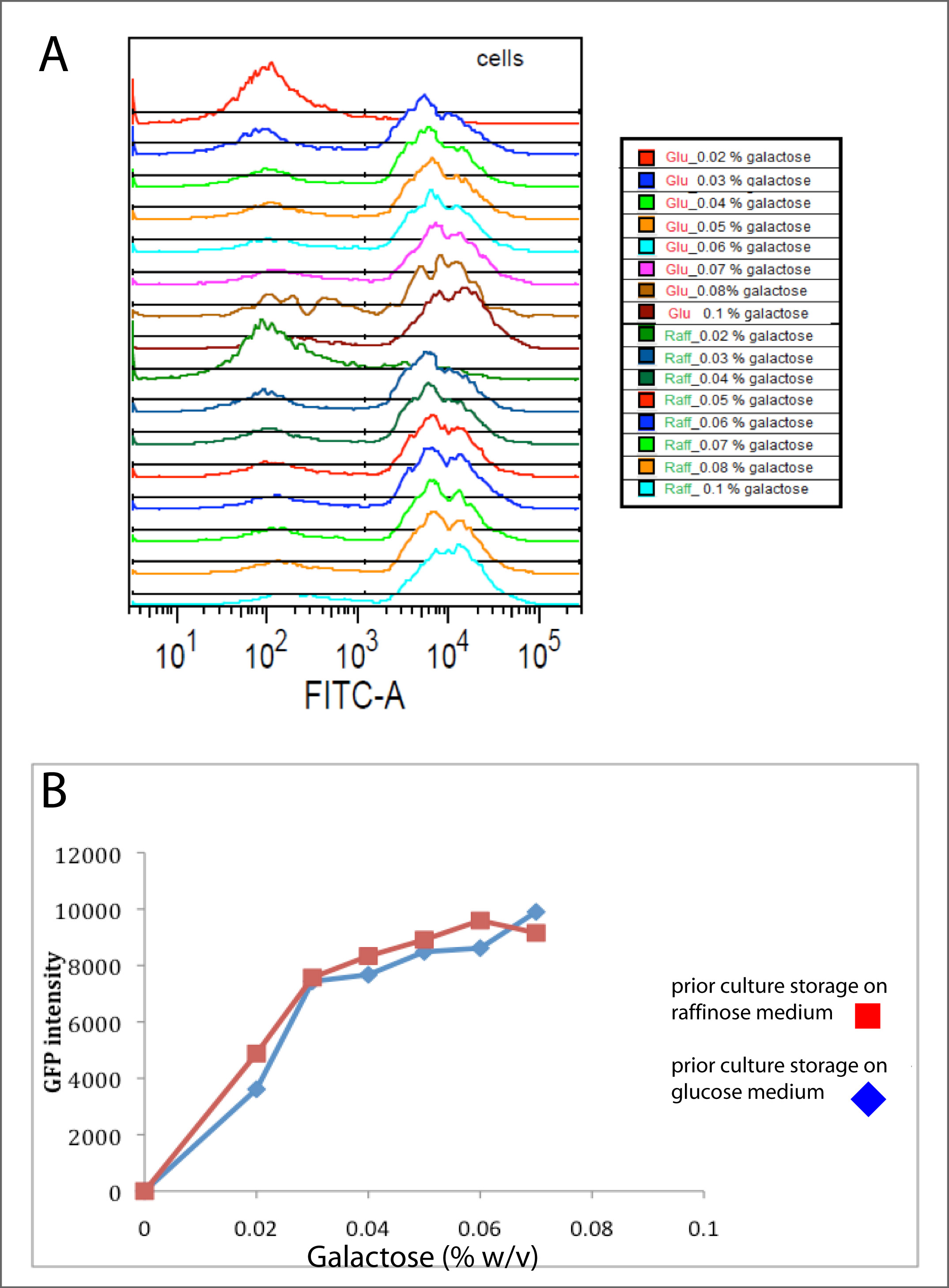Team:Aberdeen Scotland/Galactose dose response of Gal1 Promoter in pRS415
From 2010.igem.org
University of Aberdeen - ayeSwitch
Measurement of dose responsiveness of the GAL1 promoter to galactose using construct GAL1p-(Npep-GFP)
Aim
Previous dose response experiments using the fluorometer revealed that full GAL1 promoter induction was achieved at concentrations above 0.5% (data not shown). We wanted to examine the dose responsive behaviour of the GAL1 promoter across a full range of concentrations. Therefore the dose response experiments were repeated using lower concentrations of this inducing agent. We have therefore tested media containing between 0.02% and 2% of galactose.
Protocol
1. Yeast transformed with a plasmid carrying the GAL1p-(Npep-GFP) construct was inoculated overnight into 5 ml of synthetic defined (SD) medium with amino acids: his (0.2 %), met (0.2 %), ura (0.2 %), trp (0.2 %) and raffinose (2 %) as the carbon source.
2. The following evening this cell culture was sub-cultured into a flask containing pre-warmed SD medium (50 mls) with 2% raffinose, and one of a range of concentrations of galactose between 0.02% and 2% of galactose, to achieve an optical density at 600nm of 0.6 by 9.00 am the following morning.
3. Samples were washed into PBS, and diluted 1/20 in preparation for FACS analysis.
Results
(a) Flow cytometry was used to quantify GFP fluorescence, with an excitation wavelength of 488 nm, and an emission filter of 510 nm, for cells grown on medium containing galactose concentrations between 0.05% and 2% w/v
The graph above summarises the FACS data, and shows that the intensity of GFP expressing cells increases in response to the percentage of galactose in the growth medium. The GAL1 promoter in our construct showed a high degree of sensitivity to the inducing agent, with concentrations as low as 0.01% having significant inducing potential.
(b) In further experiments (panels A and B, immediately below), we sought to test the ability of even lower concentrations of galactose to induce the Gal1 promoter. Concentrations between 0.02% and 0.07% were tested, revealing that even at 0.02%, galactose was able to induce the GAL1 promoter. Panel A shows the raw FACS data, with panel B indicating the quantitation of this data to indicate the inducing effect of different galactose concentrations. The study also revealed that as long as pre-culture in liquid medium was carried out with raffinose (2%) as a carbon source, the prior maintenance of the stock yeast on agar medium containing glucose or raffinose did not affect the ability of the promoter to be subsequently induced by galactose (see panel B below, compare blue symbols [glucose] with red symbols [raffinose]).
Conclusion
The experiment clearly showed that the percentage of cells expressing GFP was exquisitely sensitive to the presence of galactose, with the dose response saturating above 0.1% galactose. Testing of low concentrations also showed that the promoter was extremely sensitive, with concentrations as low as 0.02% w/v causing detectable induction of the promoter. This therefore clearly shows that the GAL1 promoter is highly sensitive, but that as a synthetic biology part, it may not exhibit ideal linear responses to inducing agent for some applications. The observed GFP expression response suggests that the GAL1 promoter behaves as an analogue switch across only a very narrow range of inducer concentrations.
 Return to Results Main Page Return to Results Main Page
|
 "
"

